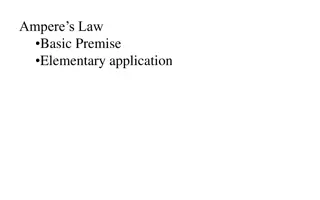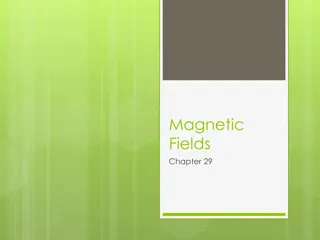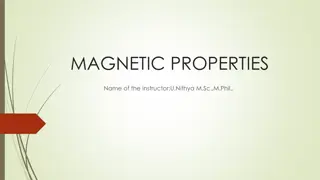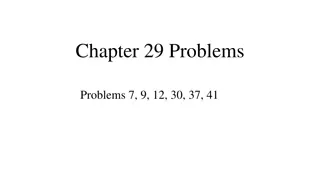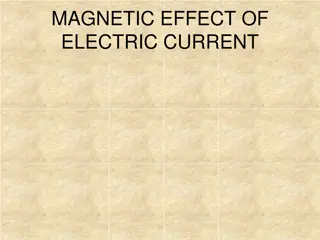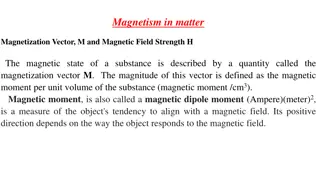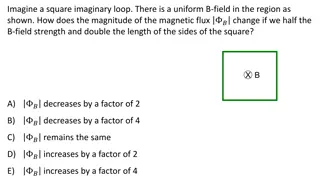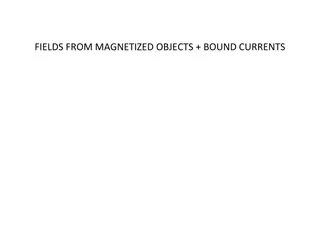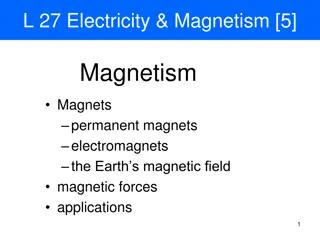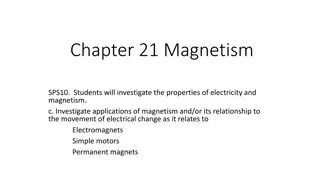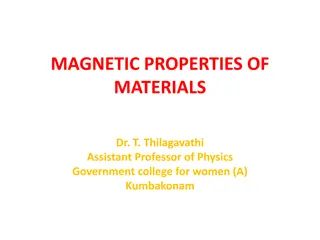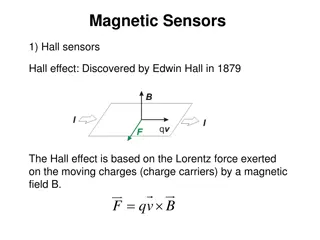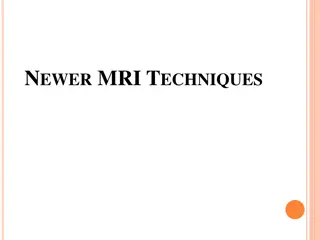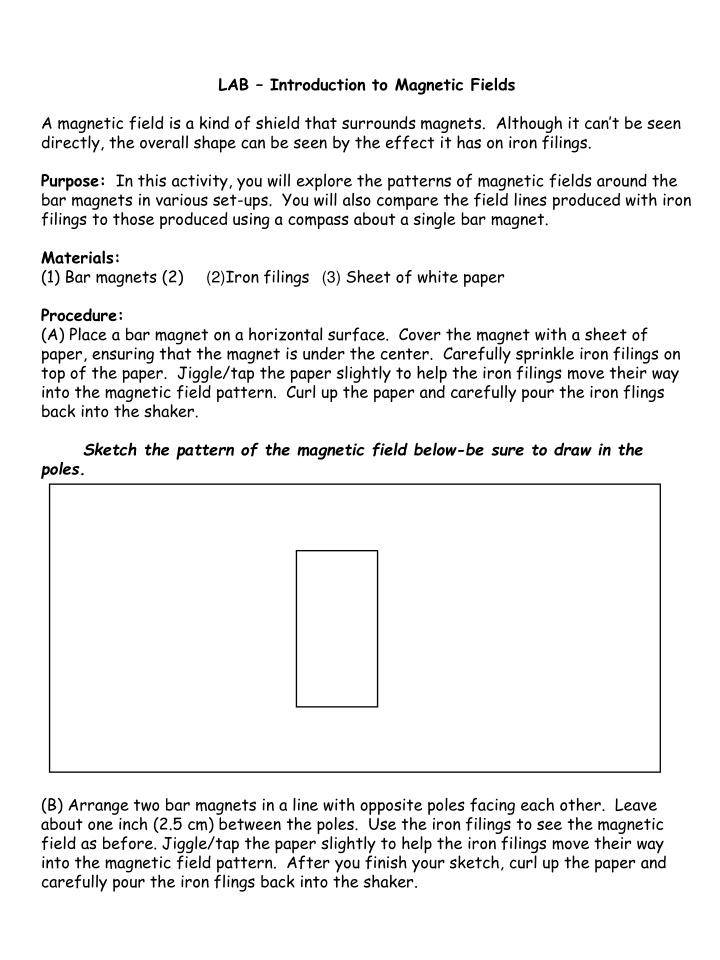
Exploring Magnetic Fields with Bar Magnets - Hands-On Lab Activity
Uncover the hidden patterns of magnetic fields by conducting experiments with bar magnets and iron filings. Learn how magnetic fields behave around different setups, compare results, and answer essential questions related to magnetic forces in this engaging lab activity.
Download Presentation

Please find below an Image/Link to download the presentation.
The content on the website is provided AS IS for your information and personal use only. It may not be sold, licensed, or shared on other websites without obtaining consent from the author. If you encounter any issues during the download, it is possible that the publisher has removed the file from their server.
You are allowed to download the files provided on this website for personal or commercial use, subject to the condition that they are used lawfully. All files are the property of their respective owners.
The content on the website is provided AS IS for your information and personal use only. It may not be sold, licensed, or shared on other websites without obtaining consent from the author.
E N D
Presentation Transcript
LAB Introduction to Magnetic Fields A magnetic field is a kind of shield that surrounds magnets. Although it can t be seen directly, the overall shape can be seen by the effect it has on iron filings. Purpose: In this activity, you will explore the patterns of magnetic fields around the bar magnets in various set-ups. You will also compare the field lines produced with iron filings to those produced using a compass about a single bar magnet. Materials: (1) Bar magnets (2)(2)Iron filings(3) Sheet of white paper Procedure: (A) Place a bar magnet on a horizontal surface. Cover the magnet with a sheet of paper, ensuring that the magnet is under the center. Carefully sprinkle iron filings on top of the paper. Jiggle/tap the paper slightly to help the iron filings move their way into the magnetic field pattern. Curl up the paper and carefully pour the iron flings back into the shaker. Sketch the pattern of the magnetic field below-be sure to draw in the poles. (B) Arrange two bar magnets in a line with opposite poles facing each other. Leave about one inch (2.5 cm) between the poles. Use the iron filings to see the magnetic field as before. Jiggle/tap the paper slightly to help the iron filings move their way into the magnetic field pattern. After you finish your sketch, curl up the paper and carefully pour the iron flings back into the shaker.
Sketch the pattern of the magnetic field below-be sure to draw in the poles. (C) Arrange two bar magnets in a line with same poles facing each other. Leave about one inch (2.5 cm) between the poles. Use the iron filings to see the magnetic field as before. Jiggle/tap the paper slightly to help the iron filings move their way into the magnetic field pattern. After you finish your sketch, curl up the paper and carefully pour the iron flings back into the shaker. Sketch the pattern of the magnetic field below-be sure to draw in the poles. (D) Lay the magnets side by side about one inch apart with opposite poles next to each other. Place the paper on the magnets and sprinkle the iron filings on the magnets as you have done in the previous trials. Jiggle/tap the paper slightly to help the iron filings move their way into the magnetic field pattern. After you finish your sketch, curl up the paper and carefully pour the iron flings back into the shaker.
Sketch the pattern of the magnetic field below-be sure to draw in the poles. (E) Lay the magnets side by side about one inch apart with same poles next to each other. Place the paper on the magnets and sprinkle the iron filings on the magnets as you have done in the previous trials. Jiggle/tap the paper slightly to help the iron filings move their way into the magnetic field pattern. After you finish your sketch, curl up the paper and carefully pour the iron flings back into the shaker. Sketch the pattern of the magnetic field below-be sure to draw in the poles.
Conclusion Questions-Answer questions below in complete sentences, except #3. 1. A magnetic field is strongest where it has the most lines of force. Where is the field strongest around the magnet? 2. Do any of the lines of force sketched in any of the 5 drawings cross each other? 3. Draw the magnetic field for the magnets below. N N S S

